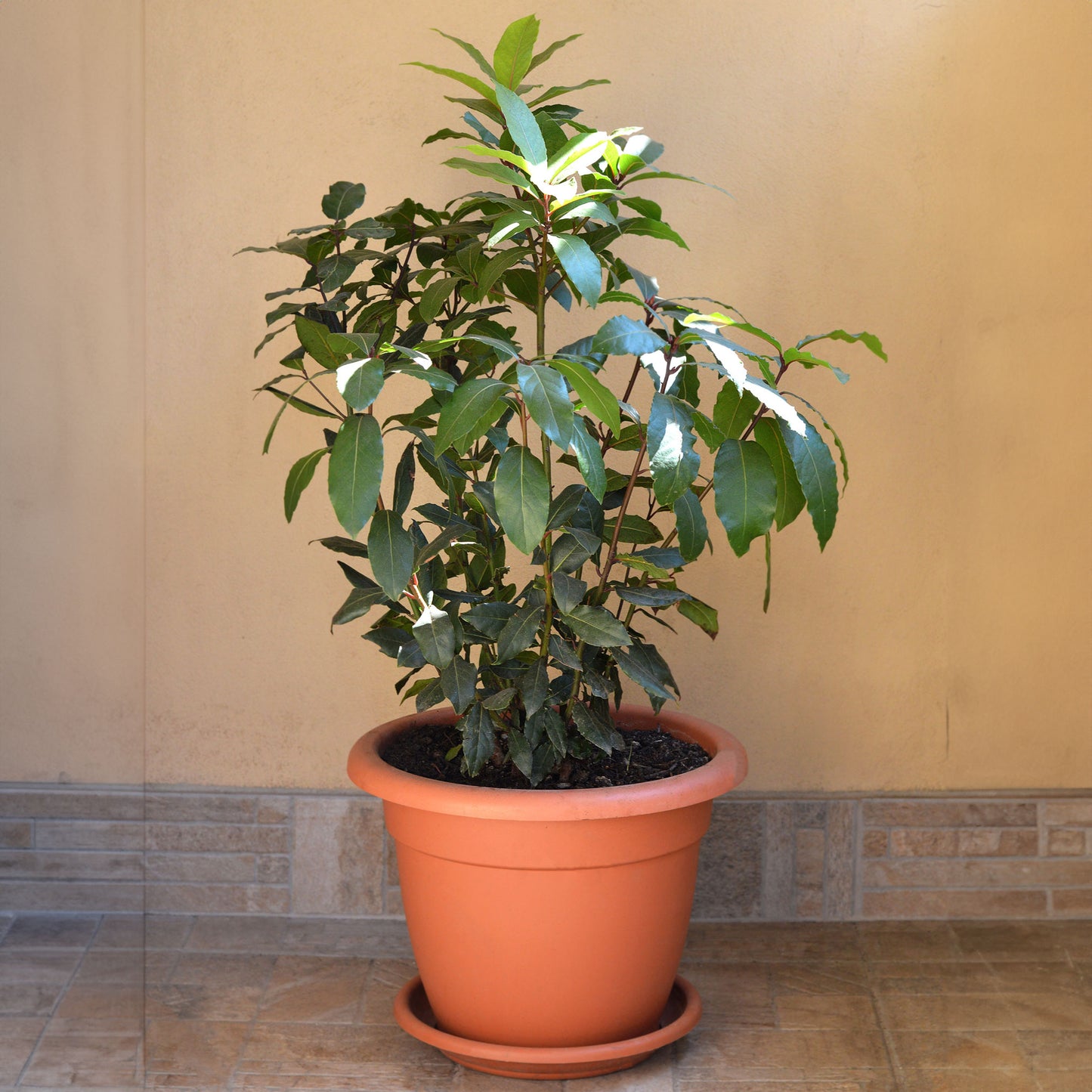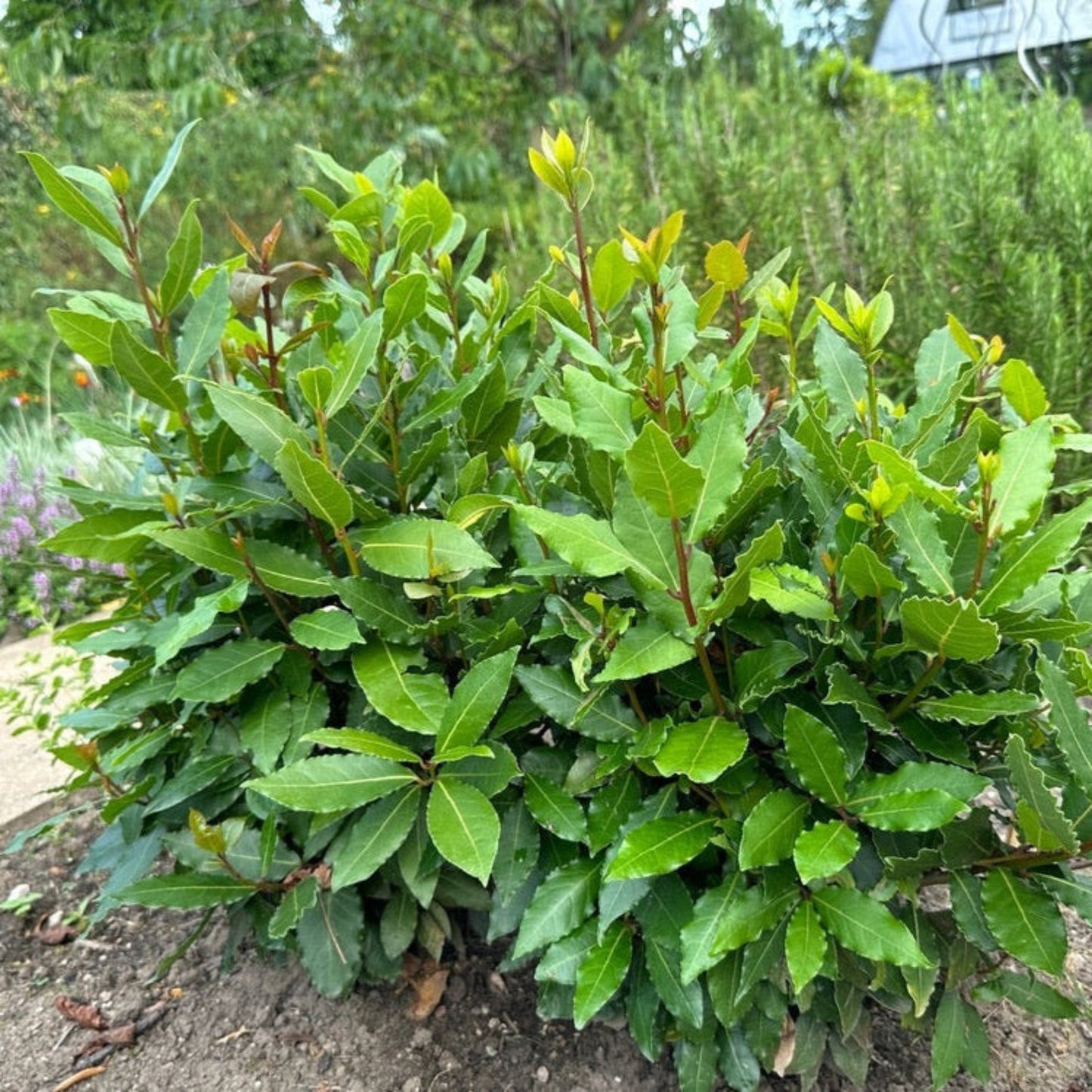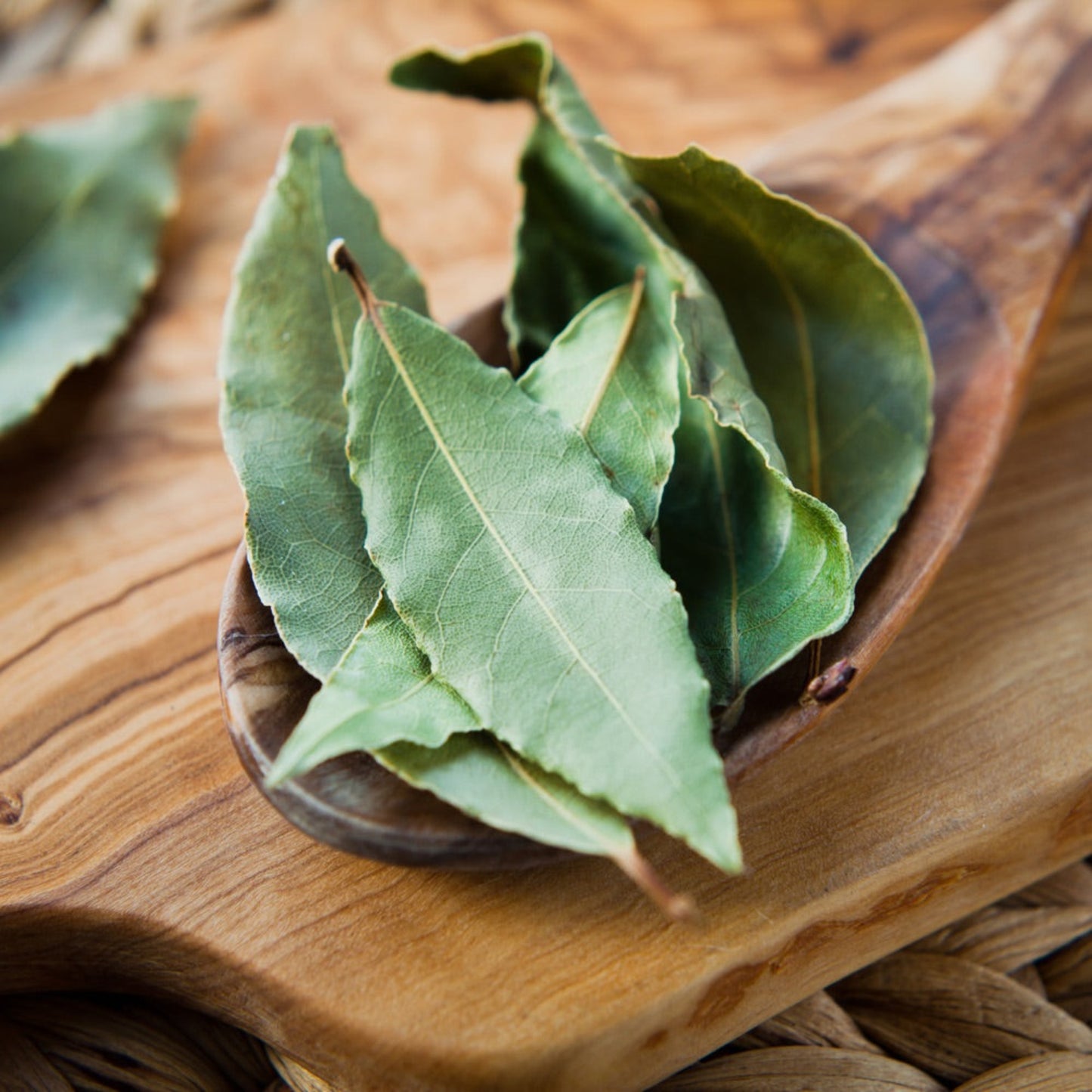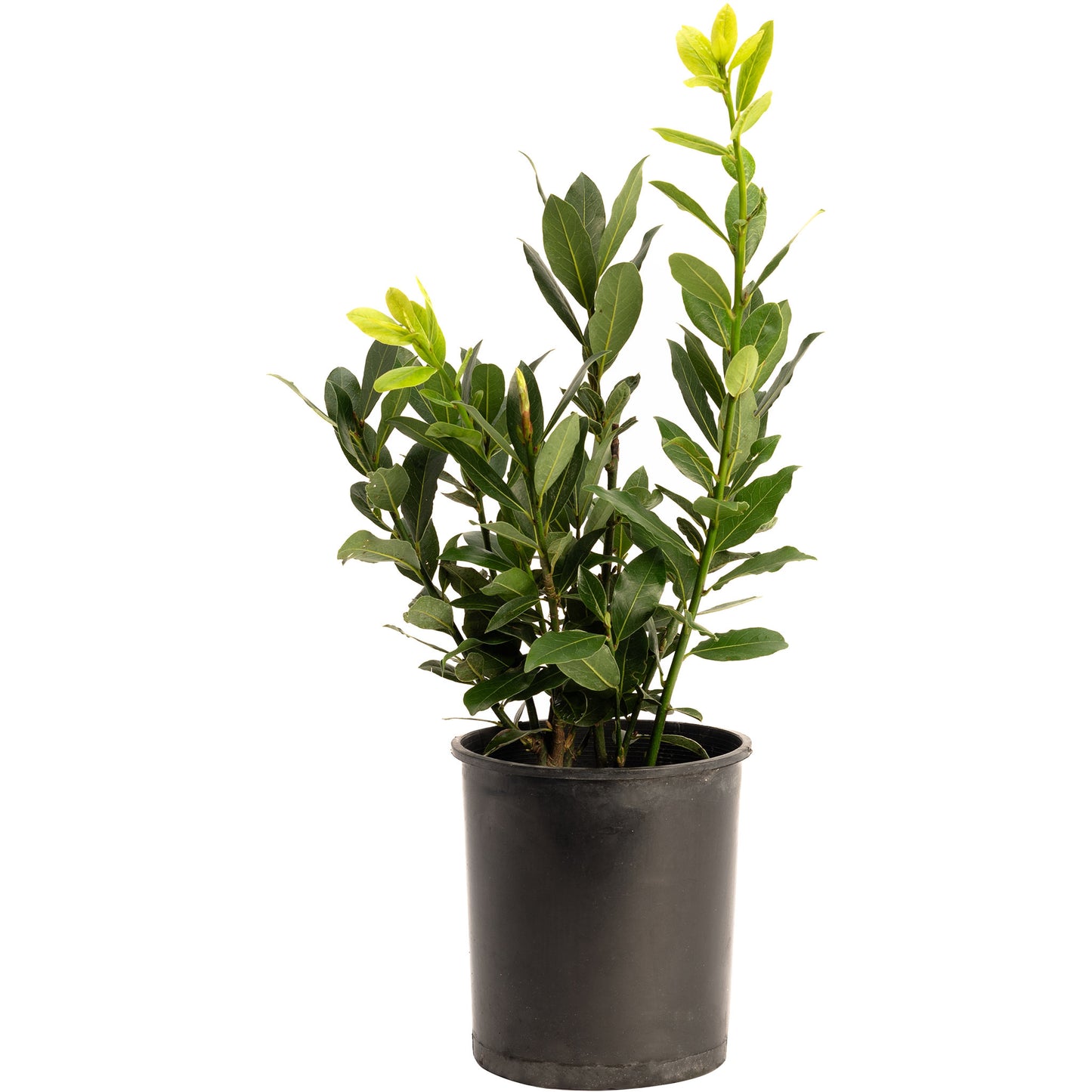Bay Laurel
Bay Laurel
SKU:EDB-HER-BAY-NA-3G
Bring a Touch of Grecian Elegance to Your Garden with Bay Laurel!
Ever dreamt of spicing up your culinary creations with a dash of home-grown history? Meet the Bay Laurel (Laurus nobilis), a timeless classic that's more than just a pretty face. This versatile evergreen is a must-have for both your garden and your kitchen!
Why Bay Laurel?
- Year-Round Beauty: With its glossy, deep green leaves, Bay Laurel adds a permanent splash of color to any space, indoors or out.
- Grow Your Own Flavor: Imagine plucking fresh bay leaves right from your backyard to elevate your cooking. It's a chef's dream!
- Easy Care, Big Rewards: Bay Laurel is low maintenance, happy in a pot or in the ground, and can be pruned into stylish shapes.
- Space-Savvy: Perfect for small gardens or patios, it grows well in containers, allowing you to save space without sacrificing greenery.
Planting & Care Tips
Bay Laurel loves a sunny spot with well-drained soil. Water it regularly, but don't overdo it – this plant likes its soil on the drier side. A little trim now and then keeps it in perfect shape, and you'll be rewarded with a plant that's as functional as it is ornamental.
Ready to Add Some Laurel to Your Life?
Whether you're a budding chef or a garden enthusiast, the Bay Laurel is a sublime choice. It's not just a plant; it's a piece of history, a flavor enhancer, and a green guru all rolled into one. Order yours today and start growing your very own laurel wreath!






Product Details
-
Product Category
Edibles
-
Product Subcategory:
Herbs
-
Botanical Name:
Laurus nobilis
-
Does Not Ship To:
AZ, OR
-
Mature Height:
10-15 ft.
-
Mature Width:
8-10 ft.
-
Growing Zone:
4-11 patio / 8-11 outdoors
-
Indoor Growing:
Indoors or Patio (non-freezing)
-
Sunlight:
Full-Part Sun
-
Growth Rate:
Slow
-
Harvest Time:
Year-round
-
Bloom Time:
Spring

Planting Directions
<h2>Planting Bay Laurel</h2>
<p>To plant Bay Laurel, follow these steps:</p>
<ul>
<li>Choose a well-draining potting mix for container planting or a spot in the garden with well-drained soil.</li>
<li>Bay Laurel prefers full sun to partial shade. Select a location that receives at least 6 hours of sunlight daily.</li>
<li>Plant the Bay Laurel in spring or fall. Space multiple plants 5 to 6 feet apart.</li>
<li>Dig a hole twice as wide and the same depth as the root ball. Place the plant in the hole and backfill with soil, tamping down gently.</li>
<li>Water thoroughly after planting to settle the soil around the roots.</li>
</ul>
<h2>Care and Maintenance</h2>
<p>For ongoing care of Bay Laurel, follow these guidelines:</p>
<ul>
<li>Water regularly, allowing the soil to dry out slightly between waterings. Reduce watering in winter.</li>
<li>Fertilize with a balanced, slow-release fertilizer in spring and again in mid-summer.</li>
<li>Prune in late winter or early spring to maintain shape and encourage bushy growth.</li>
<li>Bay Laurel is drought-tolerant once established but will benefit from mulching to retain soil moisture.</li>
<li>Protect from frost, especially in containers, by moving indoors or providing a frost blanket in colder climates.</li>
</ul>
<h2>Pollination</h2>
<p>Bay Laurel is self-fertile, meaning it does not require cross-pollination to produce its aromatic leaves. However, if you are interested in producing seeds, flowers will need to be pollinated. This is typically done by bees and other insects.</p>
<h2>Harvesting</h2>
<p>To harvest Bay Laurel leaves:</p>
<ul>
<li>Harvest leaves at any time once the plant is well established.</li>
<li>Pick individual leaves or snip leafy stems if a larger quantity is desired.</li>
<li>Fresh leaves can be used immediately, or they can be dried for longer storage.</li>
</ul>

FAQs
<h2>FAQs for the Bay Laurel</h2>
<h3>1. How do I plant Bay Laurel?</h3>
<ol>
<li><strong>Choose the right location:</strong> Bay Laurel prefers full sun to partial shade and well-drained soil. Avoid areas that become waterlogged.</li>
<li><strong>Prepare the soil:</strong> Mix in some compost or well-rotted manure to enrich the soil.</li>
<li><strong>Planting:</strong> If you're planting a nursery-grown plant, dig a hole twice as wide and just as deep as the root ball. Remove the plant from its container, gently tease out the roots, place it in the hole, and fill in with soil. Water thoroughly.</li>
<li><strong>Spacing:</strong> If planting multiple Bay Laurels, space them 3-5 feet apart to allow for growth.</li>
<li><strong>Watering:</strong> Keep the soil consistently moist but not waterlogged during the first growing season.</li>
</ol>
<h3>2. How do I fertilize Bay Laurel?</h3>
<p><strong>Bay Laurel</strong> does not require heavy fertilization. Use a balanced, slow-release fertilizer in the spring as new growth appears. Avoid over-fertilizing, which can harm the plant and reduce its flavor if you plan to use the leaves for cooking.</p>
<h3>3. How is Bay Laurel pollinated?</h3>
<p>Bay Laurel is self-fertile, meaning it does not require cross-pollination from another plant to produce seeds. However, bees and other pollinators can help increase seed production by visiting the flowers. No special action is required on your part for pollination.</p>
<h3>4. How do I prune Bay Laurel?</h3>
<ul>
<li><strong>Timing:</strong> Prune in late winter or early spring before new growth begins.</li>
<li><strong>Shaping:</strong> Bay Laurel can be shaped into a bush or a tree, depending on your preference. Regular pruning helps maintain the desired shape and size.</li>
<li><strong>Health:</strong> Remove any dead, damaged, or diseased branches to keep the plant healthy. Also, thin out the center to improve air circulation.</li>
</ul>
<h3>5. When and how do I harvest Bay Laurel leaves?</h3>
<ol>
<li><strong>Timing:</strong> Bay Laurel leaves can be harvested at any time of year, but the best flavor is obtained from leaves picked in the summer.</li>
<li><strong>Method:</strong> Use sharp scissors or pruning shears to snip leaves or branches. Avoid taking more than one-third of the plant at a time to keep it healthy.</li>
<li><strong>Usage:</strong> Leaves can be used fresh or dried. To dry, hang branches in a cool, dark place or lay leaves out on a screen until crisp.</li>
</ol>
<p>Remember, gardening is a journey of learning and discovery. Don't be afraid to experiment and adjust your practices as you gain experience with your Bay Laurel. Happy gardening!</p>







